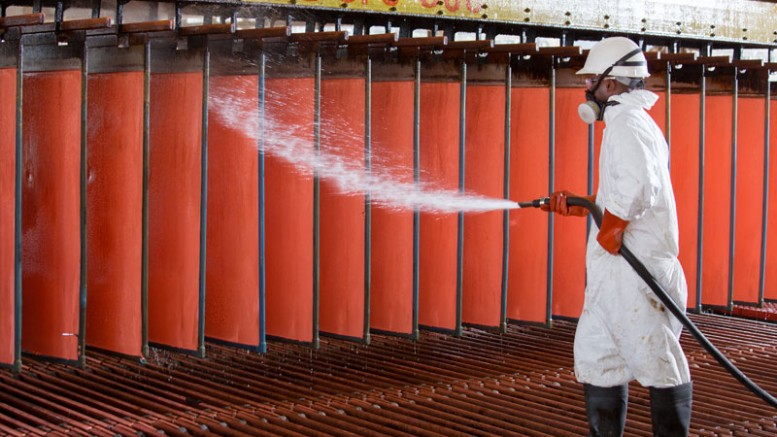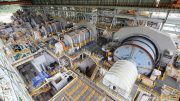Rory Johnston is a commodity economist covering energy and metal markets in Scotiabank’s Economics department. His research includes the Scotiabank Commodity Price Index (a monthly assessment of developments affecting the prices of major Canadian export commodities), contributions to Scotiabank’s Global Outlook (the department’s flagship quarterly forecast), as well as notes on various topics of interest to the Canadian commodity sector. He recently spoke to The Northern Miner about his outlook for 2019.
The Northern Miner: In your latest commodity note in mid-October, you said that you believe the U.S.-China trade war will be “long-lived and remain a slow-burn drag on industrial commodity sentiment through to the 2020 U.S. presidential election.” Why don’t we start there?
Rory Johnston: The important thing to note here is that the impact of the trade dispute on metal prices and the market are above and beyond what the impact has been on physical demand so far. The market is betting that the trade dispute will slow global growth and will lead to less demand. We haven’t seen that yet, but we might see some mild slowing in 2019.
We don’t believe that the trade dispute will intensify further due to the political costs for the White House of a final tranche of traded goods being heavily tilted toward consumer items, like iPhones. We don’t think it’s going to accelerate, but it won’t be solved, either. It seems relatively popular in the U.S., politically, even if it’s causing consumer prices to rise. Standing up to China on trade holds fairly broad bipartisan support, so even with the Democrats controlling the House, it doesn’t seem likely that it will be materially rolled back any time soon. This will likely come up as an issue in the next presidential elections, frankly. If it was raised, it would be raised as a broader question on the U.S. position on trade and cooperating within the global system, more so than at this stage right now.
TNM: The U.S.-China trade dispute has dented the outlook for base metals demand.
RJ: The world was running quite hot — demand and economic growth were extremely strong. But it can’t be sustained. Both Canada and the U.S. are growing above potential, in terms of the natural run rate of the economy, which is why we see inflation rising and banks beginning to tighten interest rates to slow the economy, which is running a bit too hot, relative to where it should be in the long-term. And Canada and the U.S. are experiencing that right now. So we expect that growth will slow slightly. The peak of that growth is likely behind us now for this cycle, so that will moderately weigh on all commodities next year, but not materially so. We’re talking a slight easing off on the gas pedal.
TNM: What are your price forecasts for some of the base metals? You’ve said recently that copper prices will average US$3 per lb. in 2019 and $3.25 per lb. in 2020.
RJ: The story on copper is that the market right now is underpricing it relative to its fundamentals. It’s not extremely tight at the moment. No one is really scrambling for copper right now, but the entire market knows there will be significant supply deficits coming down the line, with the penetration of higher-tech manufacturing, buildouts of power grids — not to mention the pickup in the electric vehicle (EV) story. And it all bodes extremely well for copper.
So copper demand is going to keep chugging along at a strong pace, and the supply isn’t really there in the early 2020s. There are some projects, but not nearly enough to fill the gap. Prices need to rise above US$3 per lb. to provide the incentive to finalize investment decisions and break ground, and start the timeline to get a new copper mine from development to production, which typically takes seven or eight years. We need investment, and at these prices, we’re probably not going to see that investment. So we see prices moving higher in the early 2020s, we could easily see US$3.50 per lb. copper, if not US$4 per lb. in the early 2020s — 2022 to 2024 — that’s when prices are really going to start picking up, based on the long-term outlook where we see mines coming online and the trend rate for demand, which we think is going to be relatively robust. We don’t see a global recession in our outlook, so the big question is: “When will the market really wake up to the knowledge of those deficits, and when will current pricing begin to reflect that supply gap in today’s market?” We haven’t seen that yet.
TNM: What about zinc?
RJ: It’s been the perennial best performer for the last couple of years. We finally saw it lose some of its momentum in February, as we started seeing more mines coming online, and demand slowing on the back of weak real estate and construction activity in China. Zinc likely has one more bounce in it before it capitulates to higher supply. The reason for that is that the mines are coming on stream, but new supply hasn’t worked itself into the refined metal market yet. The result is that we have lots of ore but not a lot of metal, and that’s further driven by all of the environmental policies in China, which are pulling back capacity utilization at a bunch of different smelting facilities around the country, for environmental reasons. So you need a pickup in that capacity to build, and that will begin to happen next year, and we’ll see the zinc price pop up one last time in 2019. After that, prices will gradually come back to US$1.20 per lb. to US$1.15 per lb., longer-term.
Another one of the big ones that have changes coming down the line is nickel. It was doing quite well — it was really picking up [mid-year]. There were lots of deficits for a while and those were slowly eating away at the market, and we saw inventories come down quickly, so prices started to outperform. We had this giant boost from the EV battery story, which pushes prices even higher, before eventually being hit back down beginning in July.
The sentiment around the trade story has hit nickel pretty hard because it’s very much a stainless steel market at the moment, as opposed to an EV story, and a lot of the stainless produced in China is affected by the tariff situation and the trade dispute, so there was a bit of a hit. The EV story was also cooling a little bit, and, finally, the biggest change for nickel has been Chinese investment in Indonesia and nickel capacity there. We expect between 100 and 200 kilo-tonnes of new Indonesian mine supply coming on stream over the next two or three years. That will take the nickel market that was in deficit and move it more into balance in the next couple of years. So we see nickel going to US$7 per lb. by 2020, but it will likely move down, with all these new mines in Indonesia. They have firm timelines, and they have already started putting bricks and mortar in the ground, and the Chinese government’s capacity to invest in these projects and get them done quickly — that’s really going to bring that supply to market quickly.
TNM: Let’s talk about gold. As you’ve said in your reports, prices have fallen on the back of rising real yields, a stronger U.S. currency, rising interest rates and bearish sentiment. You are forecasting gold to average US$1,300 per oz. in 2019?
RJ: Gold is underperforming on the back of a stronger U.S. dollar. Our outlook for 2018 had initially factored for a weakening of the U.S. dollar, which was supposed to support the price of bullion, providing the counterweight to the bearish pressure of rising rates. Political risk also has seemingly ceased to support gold, as the market numbs to the volume of risk in the headlines today.
TNM: Do you think that rising real interest rates will present the harshest headwinds to gold through 2020?
RJ: The main thing driving gold will be the question of rates and the U.S. dollar. People think the Fed might be slowing its interest rate increases and the market probabilities of futures hikes are shifting lower. So the bearish driver is the bullish driver, and vice versa. The dollar is holding gold prices back, and it’s going to flip as rates continue to rise and the dollar eventually falls. It will be more structural in the longer term — the rising current account and fiscal deficits have a strong relationship with the dollar’s long-term prospects, and those are pointing decidedly down.
The Fed is increasing interest rates, and what has happened over the last month or so, as some signs of slowing have begun to emerge, is that people are questioning whether the Fed is going to raise rates as quickly as before, or whether it will be a slower pace of tightening. The fast pace of hikes is what was previously holding gold back, so any weakening in the interest rate path is a positive for gold. We’re also more bearish on the dollar than the market is currently, so yields will present headwinds for gold and a falling dollar will present tailwinds.
TNM: Any comments on the bulks — iron ore?
RJ: Iron ore is now trading at roughly where we expected — at US$67 per tonne right now, and the story on bulks is long-term, lower-cost, high-quality ore from Brazil and Australia continuing to come to market, displacing the lower-grade product, primarily in China. And even though there’s not a ton of action on the benchmark 62% iron ore in China, there’s a lot of action between the higher-grade and the lower-grade ore. As you’ve had environmental cuts in China, a premium for the higher-grade ore (65%) has risen, and the discounts for the lower-quality ore (58%) have also risen. We see iron ore sitting at US$65 per tonne and falling to US$60 per tonne, on a longer-term basis.
TNM: Were there any surprises this year?
RJ: It was a volatile year and all the trade concerns kept things interesting, particularly on stuff like copper. We still believe the market continues to underprice copper on a fundamental basis, in large part because copper is often viewed as the bellwether of the global economy. The market is increasingly bearish on global economic growth, and bidding copper down as an expression of that view. We disagree with that thesis, which is why we see copper jumping over the next two years, and even higher later on.
We’re at a bearish point, and at moments like this you see volatility rise, and that will likely remain the case. Copper didn’t react to fairly major news on the mine supply side and things like labour disputes that would typically move the benchmark price up or down a fair bit — but we didn’t see that. What you did see was that prices react to a trade story later that week, which really points to the fact that the macro story is driving prices, rather than commodity-specific fundamentals.






Be the first to comment on "Interview: Scotiabank’s Rory Johnston on ‘volatile’ 2018, outlook for 2019"